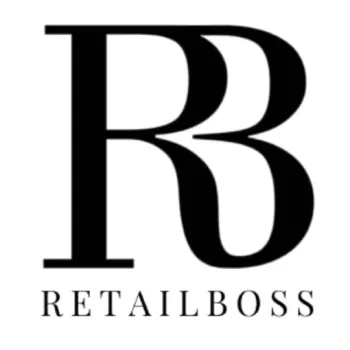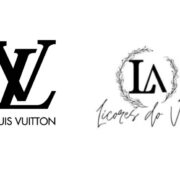Millennials and Gen Z to account for 70% of global luxury sales by 2025
The luxury goods market is witnessing a consumer shift in shopper demographics due to the driving force of Millennials, and Generation Z.

RETAILBOSS provides well-curated, research-driven news and insights into the trends…
The luxury goods market is witnessing a consumer shift in shopper demographics due to the driving force of Millennials, and Generation Z. These younger consumers are not just participating in the luxury market; they are reshaping it. According to Bain & Company, by 2025, Gen Z and Millennials are predicted to account for a staggering 70% of luxury spending, outpacing their Gen X and baby boomer counterparts.
This shift in consumer behavior is not just about who is buying, but also how they are buying. The digital age has ushered in new ways of shopping, and younger generations are at the forefront of these changes. A significant trend is the rise of online shopping, with 96% of Gen Z consumers in the United States reporting shopping online at least once a month in the first quarter of 2023.
Key Finding's of Bain's 'Global luxury goods market takes 2022 leap forward and remains poised for further growth despite economic turbulence'
- Generational trends are a major driver of growth in the luxury market. Spending by Gen Z and Gen Alpha is predicted to grow three times faster than other generations until 2030, making up a third of the market.
- The US and Europe continue to lead in the luxury market, but new markets are emerging. Southeast Asia and Korea are showing strong growth potential, while India's luxury market could expand to 3.5 times its current size by 2030.
- Despite economic challenges, the luxury market has shown resilience, with positive growth for 95% of brands in 2022. The market is better equipped to handle economic turbulence due to a larger and more concentrated consumer base.
- The luxury market is evolving, with a convergence of luxury and art. Luxury brands are transcending their original form, rooted in craftsmanship and functional excellence, towards broader meanings empowered by imagination and symbolic power.
- The luxury market's consumer base is expanding, with an estimated 400 million consumers in 2022 expected to grow to 500 million by 2030. This growth is driven by consumers becoming more knowledgeable and selective, leading to intensified competition for loyalty and advocacy.
- All luxury categories have recovered to 2019 levels or better, with hard luxury, leather, and apparel leading the resurgence following the pandemic. A deliberate 'elevation strategy' has driven a progressive price increase across the industry without damaging volume growth.
But it's not just traditional online shopping that's gaining traction. Live selling or social commerce, a trend that has taken China by storm, is now making waves in the US. According to the Influencer Marketing Factory, Gen Z accounts for 47% of consumers having made a livestream purchase in the US, with half of Millennials and Gen Zers saying they would buy products from a live video. This interactive shopping experience allows consumers to purchase products directly from live videos, often hosted by influencers or brand representatives.
For example, CommentSold is an innovative platform that allows luxury brands to engage with their customers in real-time, creating a more intimate and authentic shopping experience. CommentSold's powerful automation tools handle time-consuming administrative tasks, allowing brands to focus on building stronger connections with their audience. The platform offers an all-in-one e-commerce solution that facilitates live selling, enabling brands to simultaneously "go live" across various social media accounts, webstores, and mobile apps.
Key Findings of NCR 'Generation Z characteristics: What businesses should know about the next wave of consumers'
- Gen Z, born around 1996 through roughly 2010, makes up 40% of U.S. consumers and is projected to surpass millennials as the largest consumer base in the U.S. by 2026.
- This generation is the most ethnically diverse and is on track to be the most educated in U.S. history. - Gen Z consumers value authenticity, transparency, uniqueness, societal contribution, and collaboration in brands.
- Authenticity and relatability are key factors for Gen Z consumers. They support businesses that show authenticity and relate to their causes.
- Social media plays a significant role in their buying habits. Two out of three Gen Z shoppers want to make purchases directly through social media.
- Gen Z consumers are financially proactive, monitoring their spending habits through apps and preferring debit cards over credit cards.
- Gen Z consumers research businesses before shopping and expect brands to show they care about social and environmental issues.
- They are more likely to purchase a product or service backed by social accountability and will stop buying from a company that contributes to a cause they disagree with.
In addition to live selling, luxury brands are also leveraging social media platforms to reach their target audience. A report by the International Council of Shopping Centers revealed that 85% of Gen Z says social media impacts their purchase decisions, with TikTok and Instagram being the top platforms influencing their purchasing choices.
The ICSC survey, conducted in collaboration with Big Village, involved 1,008 respondents from Generation Z, aged between 16 and 26. The participants included part-time workers, full-time workers, students, and individuals from various living situations.
Key Findings of ICSC Survey: Gen Z Consumers Are Career-Driven, Credit-Averse, and Tempted by Immersive Retail
- The survey found that the shopping habits of online and in-person shoppers are nearly identical, indicating that retailers should focus on offering convenience, quality, speed, and a diversified presence across both physical and digital platforms.
- The study revealed that 78% of Gen Z respondents are concerned about the state of the U.S. economy, with this figure rising to 84% among older Gen Z individuals (ages 23-26). This concern is reflected in their preference for discount shopping, with 48% favoring off-price and discount retailers.
- Despite their economic concerns, 48% of Gen Z consumers are willing to pay a premium for faster delivery of online orders.
- Gen Z values successful careers over having the latest items, with more Gen Z consumers (41%) reporting that they save more than they spend.
- Responsible financial habits are evident in their payment methods, with 45% using debit cards as their primary source of payment, ahead of cash (21%) and credit cards (17%). Only 3% frequently use buy now, pay later options.
- Gen Z consumers show brand loyalty driven by value, omnichannel offerings, and alignment with their own values. Over half (56%) are willing to pay more for sustainably sourced products.
- While Gen Z is often seen as an online generation, 97% shop at brick-and-mortar stores, influenced by the immediacy of obtaining a product and the ability to see, touch, and try products before buying.
- Social media heavily influences Gen Z's shopping habits, with 85% saying it impacts their purchasing decisions. However, recommendations from friends and family (56%), reviews on product websites (54%), and interactions with store associates and seeing the product in person (43%) carry more weight than influencers (39%).
Luxury brands are taking note of these trends and adapting their strategies accordingly. Brands like Burberry and Louis Vuitton are leading the way, embracing live selling and reaping the benefits. This innovative approach to selling provides a highly interactive shopping experience that boosts personalization, increases conversions, and gives brands full control of customer data.
Final Thoughts
The luxury market is undergoing a radical transformation, driven by younger, tech-savvy consumers. As Gen Z and Millennials continue to flex their spending power, luxury brands must evolve to meet their unique needs and preferences. Luxury brands embracing digital trends like live selling and social commerce can engage these consumers in meaningful ways, driving growth and ensuring their place in the future of luxury retail.
RETAILBOSS provides well-curated, research-driven news and insights into the trends and business aspects of the rapidly evolving retail industry.





